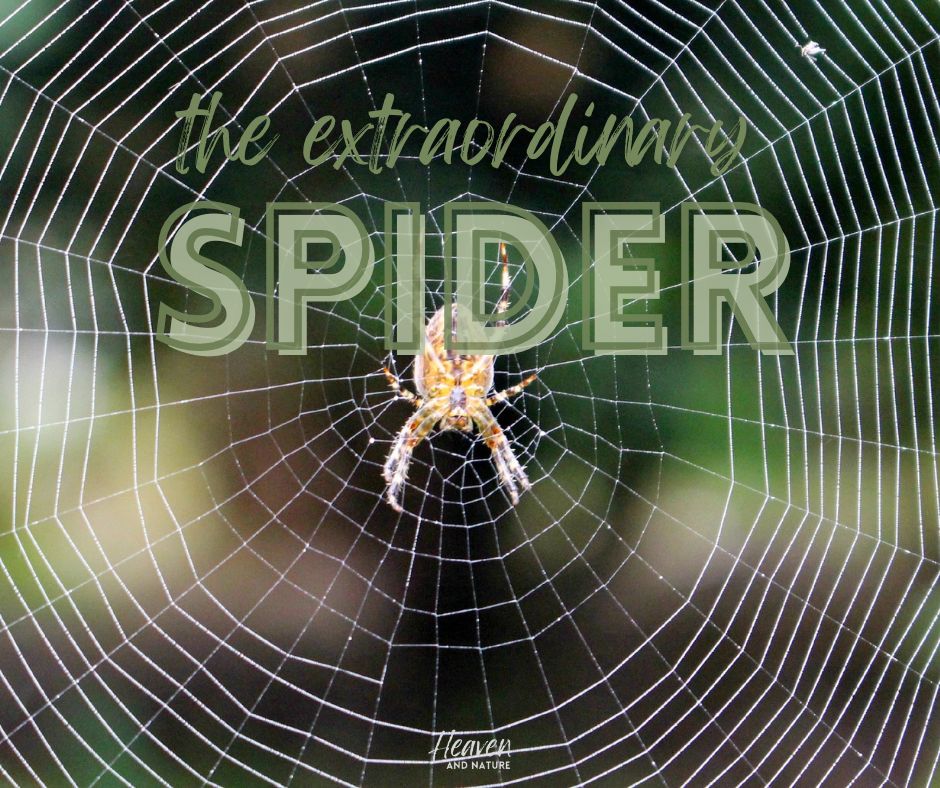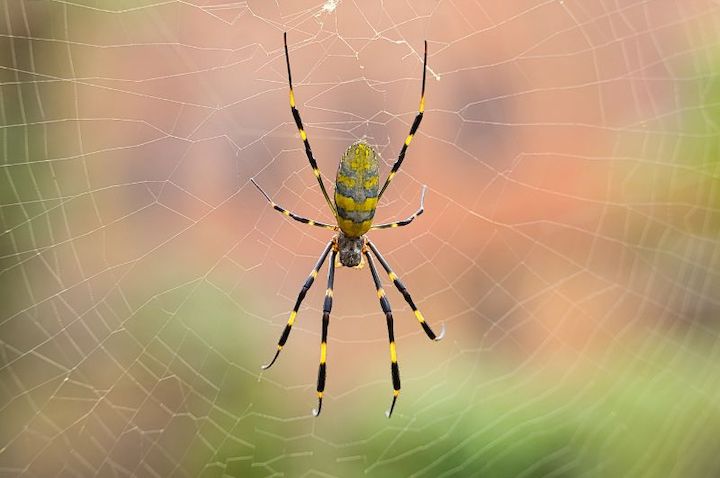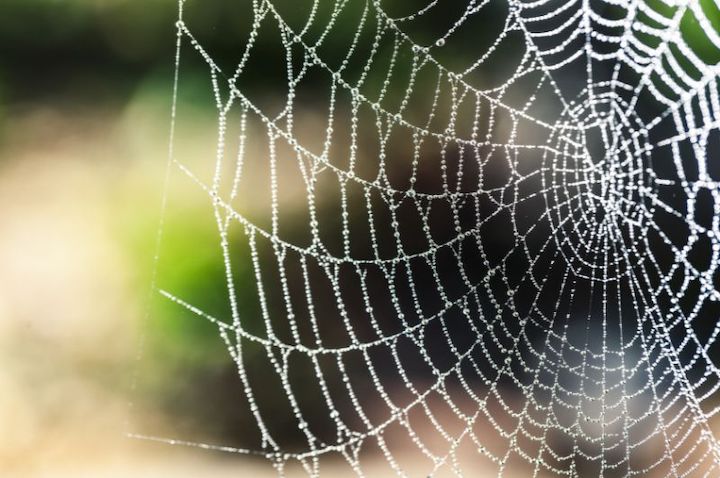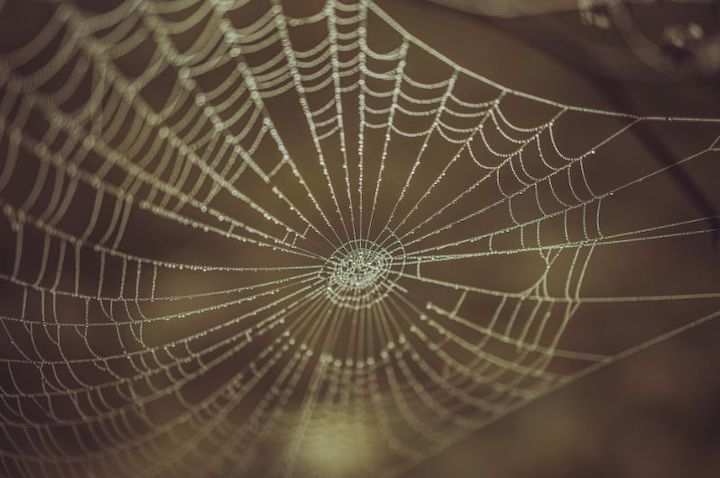I admit it—I’m not a fan of spiders. They creep me out! But the design of spiders is a wonderful example of God’s creativity and wisdom.

(Maybe after writing this I’ll be more of a fan! haha)
Here’s a quick list of some facts about spiders you may not have known:
- There are at least 50,000 different species of spider in the world (and scientists suspect many more that haven’t been discovered yet)
- Spiders are found on every continent except Antarctica
- Spiders aren’t insects, they’re arachnids—in the same family as scorpions and ticks
- All spiders have 8 legs
- Spiders can have different numbers of eyes—most have eight, some have six, some have fewer—but they’re always in pairs
- Spiders help control the world’s insect population by eating 880 million tons of them every year (I am a fan of that!)
(Sources: ScienceKids, another ScienceKids, LiveScience and Smithsonian)
Let’s look at what spiders are most known for: making silk and weaving webs…
How Specialized are Spiders’ Spinnerets?
A spider’s silk is produced inside spinnerets in its abdoman. While not all spiders make webs, they all have spinnerets that produce silk.

“Spiders have special glands that secrete silk proteins (made up of chains of amino acids), which are dissolved in a water-based solution. The spider pushes the liquid solution through long ducts, leading to microscopic spigots on the spider’s spinnerets…Each spigot has a valve that controls the thickness and speed of the extruded material.” (HowStuffWorks)
Scientists known there are seven different types of spinnerets that make different types of silk.
“One silk gland produces thread for cocoons and another for wrapping up the prey. The two seem to be the same, but they require especially designed silk. Other glands make the walking thread so the spider doesn’t get snagged herself, while another makes the sticky material that captures the juicy dinner. Some of the finer threads are almost invisible to us unless the light is reflected just right.” (Institute for Creation Research)
Human Technology Can’t Match the Strength of Spider Silk…Yet
Scientists know that spider silk is five times stronger than steel!
“The next time you brush aside a spiderweb, you might want to meditate on its delicate strength—if human-size, it would be tough enough to snag a jetliner.” (Science.org)
No human engineer has been able to figure out how to design anything as strong and flexible yet. And researchers have been trying for decades, apparently.
Several research labs around the world have worked on developing a synthetic silk with the strength and resilience properties of spider silk, but so far without success.
“Even though life scientists and engineers understand the chemical structure of spider’s silk and how its structural features influence its mechanical properties, they have not been able to create synthetic versions of it with the same set of desired properties.” (Reasons to Believe)

Isn’t it interesting that even though this is the case, evolutionists still insist these engineering marvels came into existence by chance over millions of year? How?
What Makes a Spider Web Special?
It’s not surprising that knowing the strength of spider silk, the webs made by this ultra-tough material would themselves be super strong…as in the jetliner quote above.
It’s not just the strength of the silk though, it’s also the engineering of the web itself. The geometric patterns. The criss-crossing of radial and spiral threads.
Some of the silk threads in a web are sticky, to capture insects that fly by. Others aren’t sticky, so the spider can crawl on it without getting stuck.
And research even shows that when the web is slightly damaged, its makeup is such that it becomes stronger, not weaker.
(From an Institute for Creation Research article that’s quoting a report published in Nature)

Could These Have Developed Randomly?
Again, this was all supposed to have happened by unguided, random processes over millions of years? How?
Spider spinnerets and the webs they make—not to mention the other uses for silk—are obviously highly complex and specialized.
As the author of this Reasons to Believe article says, “The idea that biological designs [like spider silk] can inspire engineering and technology advances is highly provocative…In the case of spider silk, design elegance is not limited to the structure of spider silk but extends to its manufacturing process as well—one that still can’t be duplicated by engineers.”
When we look at other highly-complex and specialized systems—like your smart phone, a Beethoven symphony or a Tolstoy novel—doesn’t it make more sense to recognize there’s intelligence and design behind them than blind chance?
Spider silk and webs are just another reason for us to wonder at God’s creativity, wisdom and unfathomable mind!
(All photos from Canva)
Here’s more…
- Why Symbiotic Relationships in Nature are So Cool
- 15 Favorite Rocky Mountain Wildflowers
- What Does it Mean to have a Biblical Worldview?
- 11 Wonderful Things in Our Natural World - February 6, 2025
- What Kind of Exercise Is Best? - January 10, 2025
- 116 Verses in the Bible that Talk About Light - December 10, 2024
